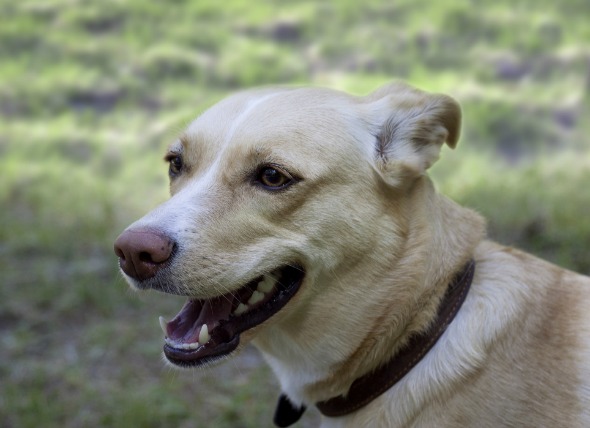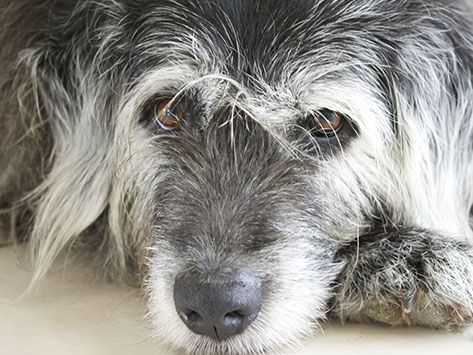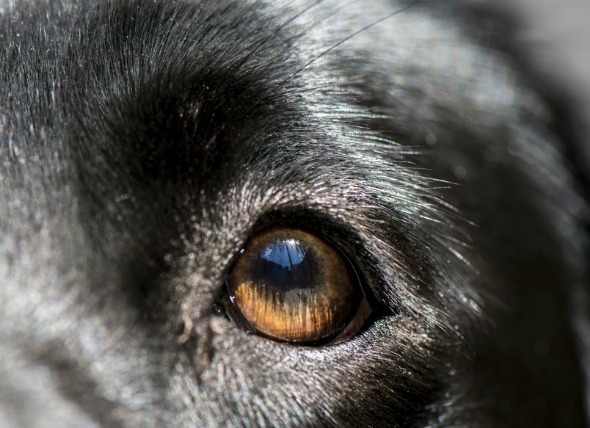
In dogs, the eosinophilic granuloma complex is a sometimes confusing term for three distinct syndromes that cause inflammation and irritation of the skin:
Eosinophilic refers to eosinophils, a type of white-blood cell usually involved in allergic responses. Granuloma is a large inflammatory nodule or solid mass. And a complex is a group of signs or diseases that have an identifiable characteristic that makes them similar in some fashion.
Note that in dogs, eosinophilic granulomas are rare and are not part of the eosinophilic granuloma complex. eosinophilic granulomas do occur in dogs and other species, they are not considered part of the eosinophilic granuloma complex. granuloma complex is restricted to cats. However, dogs can be afflicted with eosinophilic granulomas, and that will be covered here.
Eosinophilic plaque is circumscribed, raised, round-to-oval lesions that frequently are ulcerated and usually appear on the abdomen or thighs. The lesions contain a type of white blood cell called an eosinophil and usually appear between the ages of two and six years. Genetically initiated eosinophilic granuloma will be seen in dogs that are younger than two years of age.
Allergic disorders usually develop after a dog has reached the age of two, with allergy related eosinophilic granuloma becoming apparent before the dog has reached three years of age.
The genetics are unknown, although several reports indicate that in at least some individuals, genetic susceptibility (perhaps resulting in an inheritable dysfunction of eosinophils) is a significant component of the disease. With eosinophilic granuloma in dogs, Siberian huskies account for 76 percent of the cases, and mmake up 72 percent of the cases of eosinophilic granuloma in affected dogs.
Lesions of more than one syndrome may occur simultaneously. In dogs, you may notice one or more ulcerated masses that are thick with a flat top, and that appear dark or orange in color.
Eosinophilic plaques:
Eosinophilic granulomas:
Indolent ulcer:
Your veterinarian will perform a complete physical exam on your dog. You will need to give a thorough history of your dog's health, onset of symptoms, and possible incidents that might have preceded this condition, such as an allergic reaction or flea infestation. Any information you have about your dog's genetic background may also be helpful in diagnosing this disorder. Your veterinarian will order a blood chemical profile, a complete blood count, an electrolyte panel and a urinalysis as part of the diagnostic process.
The physical exam should include a dermatologic exam, during which skin biopsies for a histopathology study will be taken. Skin scrapings will also be examined microscopically and cultured for the presence of bacteria, mycobacteria and fungi. Impression smears of the lesions should also be taken.
Most dogs may be treated on an outpatient basis unless the condition is severe and is causing your dog severe discomfort.
A food-elimination trial should be started for all cases in case it is a simple allergy. A diet which your dog has never been exposed to should be put in place using high protein meats, like lamb, pork, venison, or rabbit, exclusively for 8–10 weeks. After this time, reinstitute the previous diet and observe your dog for development of new lesions.
An environmental allergy (atopy) may be identified by intradermal skin testing in some cases. Your veterinarian will inject small amounts of dilute allergens intradermally (between layers of skin). A positive reaction (allergy) is indicated by the development of a hive or wheal at the injection site.
Your veterinarian will recommend and prescribe anti-inflammatory medications for immediate relief from the swelling and inflammation. Hyposensitization injections, which use minute amounts of the allergen to lessen sensitivity to the allergen in question, works for most dogs and is preferable to long-term steroid administration.
Your veterinarian will schedule follow-up appointments with you in order to determine your dog's response to the food-elimination trial, and to monitor your dog's bloodwork. The results from the bloodwork is especially important if your dog has been prescribed immunosuppressive medication - as this will lower your dog's immune responsiveness to viruses and infections.
As much as possible, follow your veterinarian's recommendations regarding the dietary guidelines for your dog. The treatment plan will be adjusted at each follow-up appointment according to your dog's progress. If your veterinarian is able to determine an environmental cause of the allergy you will need to prevent your dog from being exposed to these allergens.
 Diabetes (Hepatopathy) in Dogs
Diabetic Hepatopathy in Dogs
Diabetic hepatopathy
Diabetes (Hepatopathy) in Dogs
Diabetic Hepatopathy in Dogs
Diabetic hepatopathy
 5 Signs of Dog Dementia
by Katherine Tolford
While your beloved senior do
5 Signs of Dog Dementia
by Katherine Tolford
While your beloved senior do
 Eye Inflammation (Blepharitis) in Dogs
Blepharitis in Dogs
Blepharitis refers to a condi
Eye Inflammation (Blepharitis) in Dogs
Blepharitis in Dogs
Blepharitis refers to a condi
 Anal Gland Cancer in Dogs
Adenocarcinoma, Anal Sac/Perianal in Dogs
While a
Anal Gland Cancer in Dogs
Adenocarcinoma, Anal Sac/Perianal in Dogs
While a
 Seizures and Convulsions in Dogs
Status Epilepticus in Dogs
Status epilepticus, or
Seizures and Convulsions in Dogs
Status Epilepticus in Dogs
Status epilepticus, or
Copyright © 2005-2016 Pet Information All Rights Reserved
Contact us: www162date@outlook.com